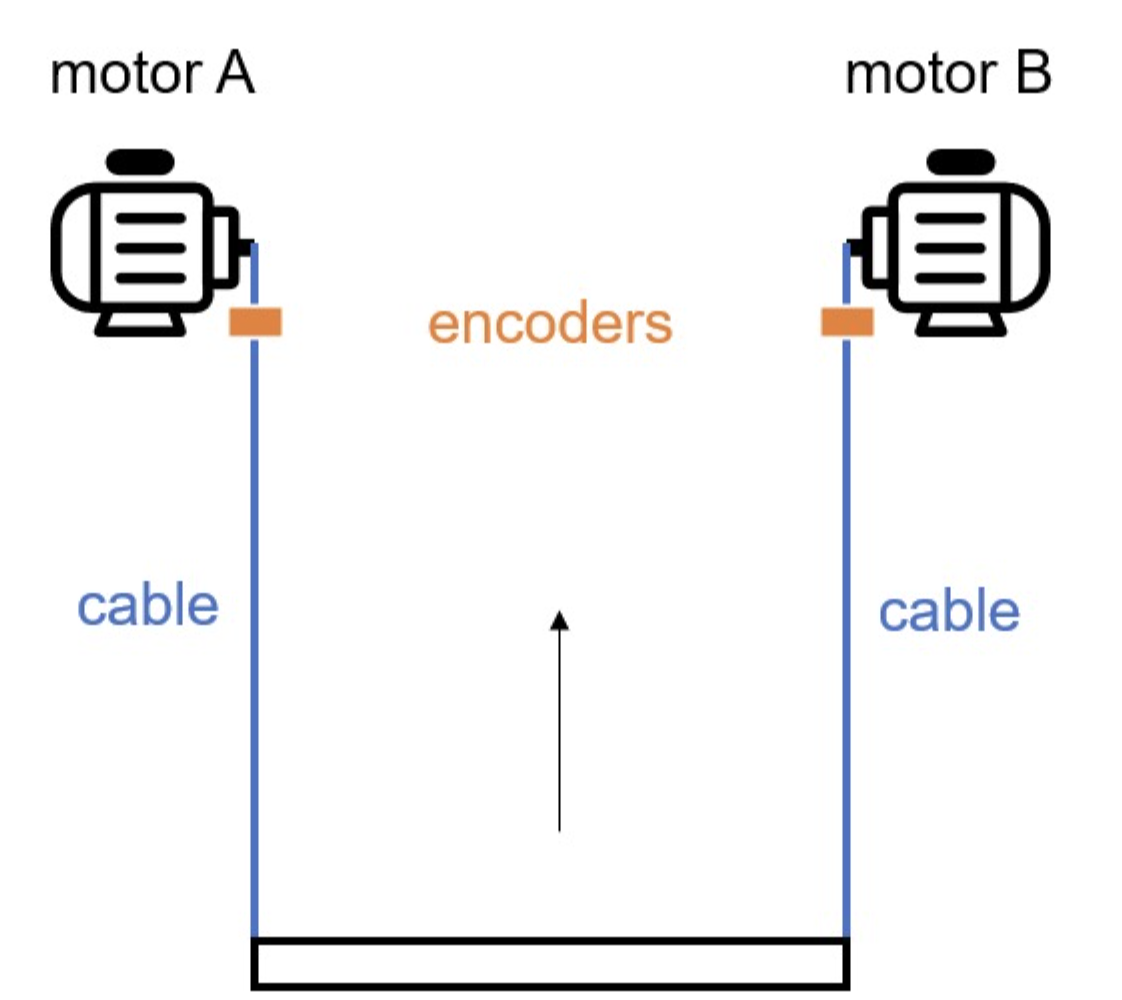I am trying to design a system in which a bucket of water is held by two cables, lifted up/down while remaining stable. The cables can be retracted/detracted by two individual motors, controlled by their own PID system. The distance the cables travel is measured by an encoder that provides a discrete signal.
However, when I set a target distance (e.g., lift 10 cm), the output of the PID system controlling the motor speeds are different due to a difference in load on each motor. As a result, the bucket is destabilizing and water is leaking out.
What is the best way to ensure that the distance traveled by the bucket follows a smooth curve (i.e. no large changes in motor speed) and still remains stable? I am not looking for a complete solution to my problem, just a direction of terms and theory to look for. Thank you.
